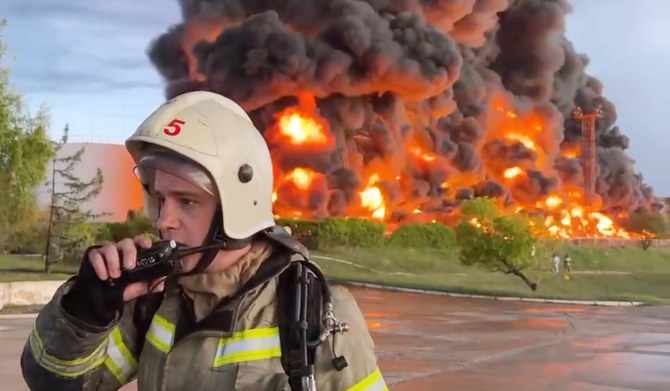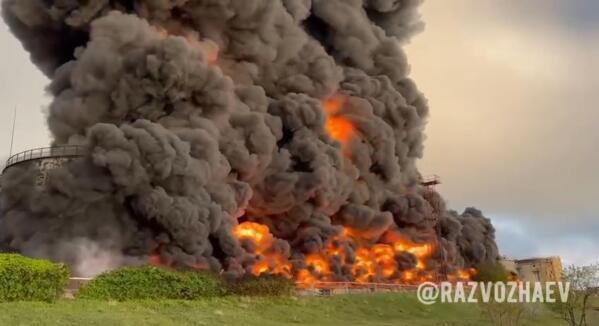Ukraine launched a missile attack on the southern Russian port of Taganrog and conducted drone strikes that reportedly caused a fire at an oil depot in Russia’s western Bryansk region, officials and media sources said.

While the extent of damage at Taganrog remains unclear, Russian authorities stated that an industrial facility and several vehicles were damaged in the port city on the Azov Sea. In Bryansk, Ukrainian forces claimed responsibility for a massive fire at an oil depot, although local officials described the incident as a brief fire at an unspecified production site. Independent Russian outlet ASTRA reported that a refinery was hit, showing footage of flames lighting up the night sky.
The strikes come amid escalating tit-for-tat attacks, with Ukraine targeting Russian energy infrastructure in response to Russian assaults on Ukraine’s power grid. Kyiv alleges that these Russian attacks have incapacitated half of Ukraine’s generating capacity, leading to blackouts and widespread damage to the energy network.
Bryansk is a critical hub for energy transit, housing the Soviet-era Druzhba pipeline, which transports oil from Siberia and the Caspian Sea to Europe, as well as the Baltic Pipeline System. Kazakhstan’s pipeline operator Kaztransoil confirmed that the Druzhba pipeline remained undamaged, and oil transit to Europe was not disrupted by the strikes.
Kazakhstan plans to send 130,000 metric tons of oil to Germany via Druzhba in December, adding to the 1.358 million tons already delivered earlier this year. A Ukrainian industry source echoed that the overnight attack in Bryansk had no impact on oil shipments to Europe.
Further south, in the port city of Taganrog, Ukrainian missiles damaged a boiler building, cutting off heat to 27 apartment buildings, according to city officials. The area has been cordoned off, and Russian authorities reported damage to 14 vehicles in addition to industrial facilities.

Taganrog, located near the border with Ukraine, is also home to a Russian airbase that analysts say is used for launching drones, bombers, and other attacks on Ukraine.
The conflict continues to escalate, with both sides deploying increasingly advanced weaponry. Ukraine’s November use of U.S.-supplied ATACMS missiles marked a significant development, as these long-range missiles have the capability to strike deep into Russian territory. Russia responded with hypersonic missile attacks, including a strike on Dnipro.
Russia has reported shooting down at least 15 ATACMS missiles since their deployment. The strikes on Taganrog and Bryansk underline Ukraine’s strategy of targeting Russian military and energy infrastructure, which Moscow has framed as a provocation by Western powers.
The ongoing war has resulted in tens of thousands of deaths, millions displaced, and the most severe geopolitical crisis between Russia and the West since the Cuban Missile Crisis of 1962. As the conflict enters what some officials describe as its final and most volatile phase, both sides are intensifying efforts to shape the outcome.
For Taganrog residents, the attack underscores the vulnerability of Russian cities near the conflict zone. Ukrainian strikes, while symbolically significant, also highlight the broader stakes of the war as Western and Russian forces remain deeply entrenched in opposing sides of the conflict.


